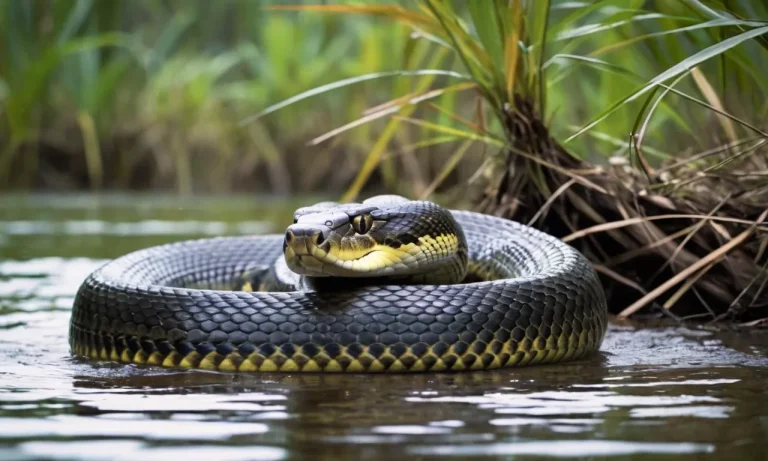Crested geckos are one of the most popular pet reptiles, known for their unique appearances and generally docile personalities. Many crested gecko owners wonder if their pets enjoy being handled and held.
If you’re short on time, here’s a quick answer to your question: Crested geckos can learn to tolerate handling, but they do not necessarily like or seek out human interaction. Handling should be kept to a minimum to reduce stress.
In this comprehensive guide, we’ll explore crested gecko behavior and body language to help owners understand when handling is appropriate and how to make the experience as low-stress as possible for these unique reptiles.
Understanding Crested Gecko Behavior
Crested geckos are not domesticated animals
Crested geckos may seem friendly and docile, but it’s important to remember that they are not domesticated animals like dogs or cats. In the wild, crested geckos are solitary animals that prefer to be left alone. They do not naturally enjoy being handled or petted.
While captive bred crested geckos are calmer than wild-caught ones, handling them too frequently can cause them stress.
Crested geckos prefer to be left alone
In their natural habitat in the tropical forests of New Caledonia, crested geckos are arboreal lizards that live alone high up in the trees. They are primarily nocturnal and quite shy. Crested geckos feel most secure when left alone in an environment that meets their needs.
Excessive handling can make crested geckos feel threatened. It’s best to limit handling to only when necessary, such as tank maintenance. Never grab a crested gecko by the tail, as this can cause tail loss. Instead, coax them gently onto your hand.
For daily interaction, simply observing your crested gecko in its terrarium is ideal.
Signs of stress in crested geckos
Watch for these signs that indicate a crested gecko is feeling stressed by too much handling:
- Closing their eyes or turning away from you
- Jumping off your hand
- Wagging or whipping their tail
- Opening their mouth wide
- Licking their nose
- Heavy breathing
If your gecko displays these behaviors, it’s time to return them to their enclosure. Give them some peace and quiet to destress. Crested geckos that are frequently stressed can become ill, stop eating, and lose weight.
While crested geckos aren’t really pets that enjoy cuddling or being played with, they are fascinating lizards to observe in a naturalistic vivarium. Their unique behaviors, vocalizations, and acrobatics will entertain you for hours.
Enjoy your crested gecko for the independent, primitive creature it is.
Should You Handle Your Crested Gecko?
Handling a crested gecko can have benefits, but also risks if done improperly. Here is a complete guide on whether and how to handle your pet crested gecko.
Benefits of Handling
Regular handling of a crested gecko has several advantages, including:
- Socialization – Gentle handling helps crested geckos become comfortable with their owners and human contact.
- Bonding – Frequent, positive interactions build trust between you and your gecko.
- Health Checks – Handling provides the opportunity to examine your gecko’s body for signs of illness or injury.
- Exercise – Allowing your gecko to walk or climb on you gives them beneficial physical activity outside their enclosure.
Potential Risks of Overhandling
While handling a crested gecko can be beneficial, overhandling can cause unnecessary stress, including:
- Fear – Excessive handling against your gecko’s will can make them fearful of humans.
- Increased Stress – Too much activity raises stress hormones like cortisol.
- Avoidance – Gecko may hide or flee when you open the enclosure.
- Reduced Immunity – Chronic stress weakens the immune system, increasing disease susceptibility.
Handling Tips to Minimize Stress
Follow these tips to make handling pleasant and low-stress for your crested gecko:
- Go Slow – Begin handling your new gecko for only 5-10 minutes, 1-2 times per week.
- Read Body Language – If they struggle or seem agitated, return them to their enclosure.
- Support Entire Body – Ensure they feel secure and can’t fall.
- Avoid Tail Dropping – Gently grasp base of tail and support hindquarters.
- Wash Hands First – Remove any scents that could be frightening.
- Have Treat Ready – Reward interaction with a small piece of fruit.
By starting slow and being mindful of your crested gecko’s behavior and body language, regular handling can be a safe and enriching experience for both of you!
How to Properly Hold a Crested Gecko
Supporting the gecko’s body
When handling a crested gecko, it’s important to fully support their body, especially the hindlegs and tail. Crested geckos have delicate skin that can be easily damaged if their full weight isn’t supported.
Gently scoop up the gecko with one hand placed under the front legs and chest, and the other hand supporting the hind legs and tail. Avoid squeezing or putting too much pressure on the gecko’s body. A light but secure hold is best.
Holding from above vs below
Always approach and pick up a crested gecko from above rather than below. Coming from below can startle them. Move slowly and confidently but gently when handling crested geckos. Make sure they see your hand coming as you lower it over their back.
Never grab at a gecko quickly from above as this can scare them.
Letting the gecko walk from hand to hand
When holding a crested gecko, let them walk from hand to hand if they want to explore. This gives them a sense of control. Lightly touch their tail or hindquarters to encourage them to walk forward onto your other hand. Never forcibly grab at a gecko to make them switch hands.
Allow them to step off on their own.
Avoiding tail drops
Crested geckos can detach their tails when frightened, so always handle them with care. Move slowly when picking them up, and don’t squeeze their tail too tightly when supporting their body. If a gecko starts thrashing in fear and is at risk of losing its tail, set them down promptly on a secure surface.
With routine gentle handling, crested geckos will learn to trust you over time.
Creating a Handling Routine
Establishing a regular handling routine is crucial for getting crested geckos comfortable with human interaction. By following some basic guidelines, you can create positive experiences that form a trusting bond between you and your reptilian companion over time.
Start handling at a young age
It’s ideal to start handling crested geckos when they are young juveniles. Babies that have early, gentle handling sessions tend to become more docile as adults. Gently scoop up hatchlings daily, even for just 5-10 minutes, to get them accustomed to human touch.
Keep handling sessions brief
Limit handling periods to 10-15 minutes, especially for young or skittish geckos. Prolonged interaction can cause them unnecessary stress. Watch for signs of fear like arched backs, thrashing tails, gaping mouths, etc. and promptly return nervous pets to their enclosures.
Make sure your gecko is healthy
Only handle crested geckos that appear alert, active, and healthy. Look for bright eyes, proper weight, intact skin and limbs, etc. Ill geckos will not tolerate handling well and need appropriate veterinary care first. Simple preventative steps like proper husbandry also reduce health issues.
Handle consistently but not too frequently
Aim to interact with crested geckos every other day or so. Frequent short sessions build trust better than sporadic marathon meetings. Still, around 1-3 times weekly is ideal for most pets per experts like Josh’s Frogs. This gives them enough recovery time between handling periods.
Use positive reinforcement
Make every interaction with crested geckos a pleasant experience. Hand feed treats, gently pet their backs, return them quickly to their terraiums after handling, etc. Building positive associations makes them more likely to tolerate and even enjoy human touch over time.
With care and patience, handling can become an enriching part of their routine.
Signs Your Crested Gecko Wants to Be Put Down
Jumping
If your crested gecko suddenly jumps or leaps out of your hands, it’s likely a sign it wants to be put down. These little lizards are normally quite docile when being handled, but they can become startled or stressed.
Jumping or launching themselves away is an instinctual reaction indicating they feel unsafe or want to escape the situation. Don’t fret though, with more regular gentle handling sessions, your gecko can become accustomed to you over time.
Wriggling/Squirming
Excessive wriggling, squirming, and restless movement are also common signals a crested gecko is ready to get down and go about its business. If you notice your gecko twisting its body back and forth or churning its legs continuously, put it back in its terrarium.
Forcing a gecko to stay still when it doesn’t want contact can cause unnecessary stress. Pay attention to these bodily cues.
Nipping
While not an aggressive species, crested geckos may deliver a little nip if they get irritated or scared. It’s rarely painful and often just a gentle warning. But if your gecko starts snapping its jaws at you or makes contact with its mouth, it’s clearly unhappy.
Carefully return it to its habitat right away. Nipping means your gecko has exceeded its handling threshold for the day.
Tail Wagging
Rapid side-to-side tail wagging demonstrates mounting anxiety or irritation in crested geckos. If you notice this behavior during handling, the gecko likely feels threatened and is preparing to drop its tail.
Since tail loss is traumatic and the tail won’t grow back the same, it’s imperative to set the gecko down when tail wagging starts. With time and positive reinforcement training, tail wagging may decrease.
Darkening Color
Lastly, some crested geckos will temporarily darken their skin coloration when upset. It’s a natural camouflage response indicating fear, stress, or overstimulation. If your gecko’s vibrant colors fade to black or brown during handling, it needs a break.
Carefully return it to its enclosure and attempt shorter handling sessions going forward.
Conclusion
While crested geckos may never learn to enjoy interacting with humans, regular but brief handling can help them become accustomed to being held when necessary. Getting to know your gecko’s personality and behavior will allow you to handle them in a way that minimizes stress.
With time and patience, you can develop a handling routine that keeps your gecko healthy and comfortable.
By understanding crested gecko behavior and body language, owners can learn to provide their pets with appropriate levels of handling while still letting them live life on their own crested gecko terms.







